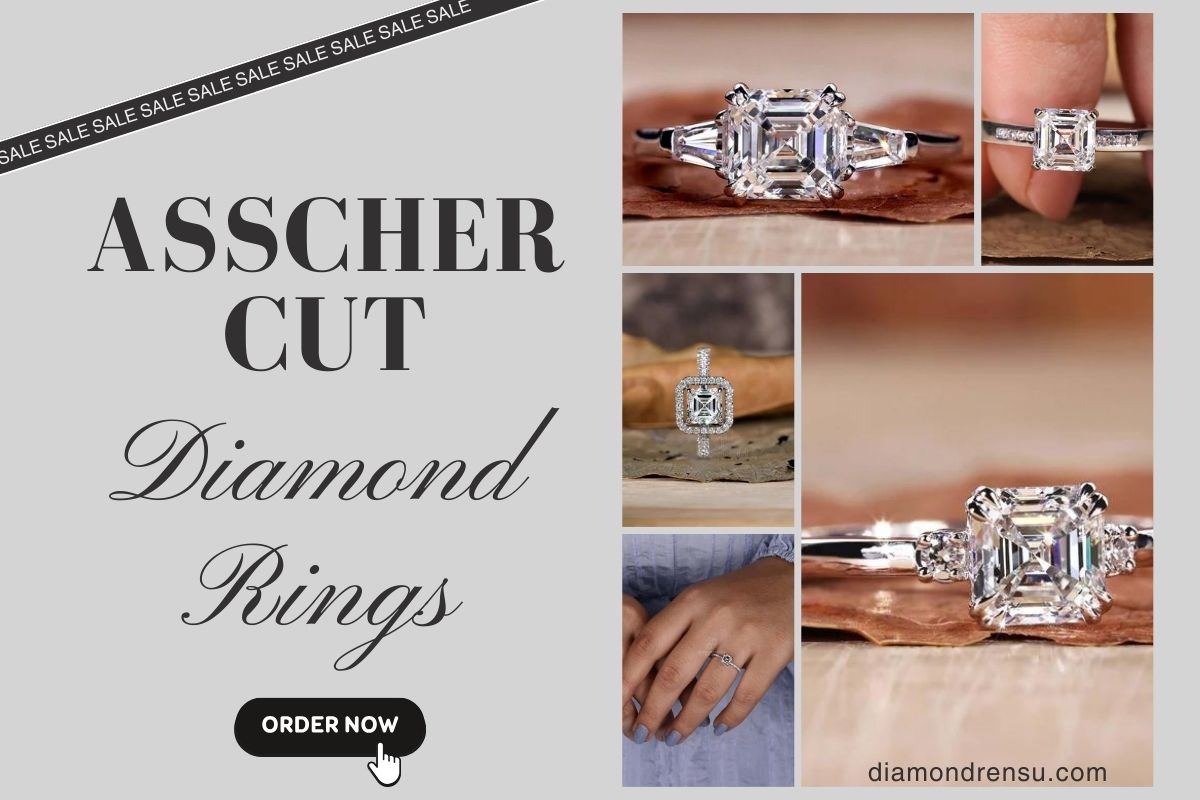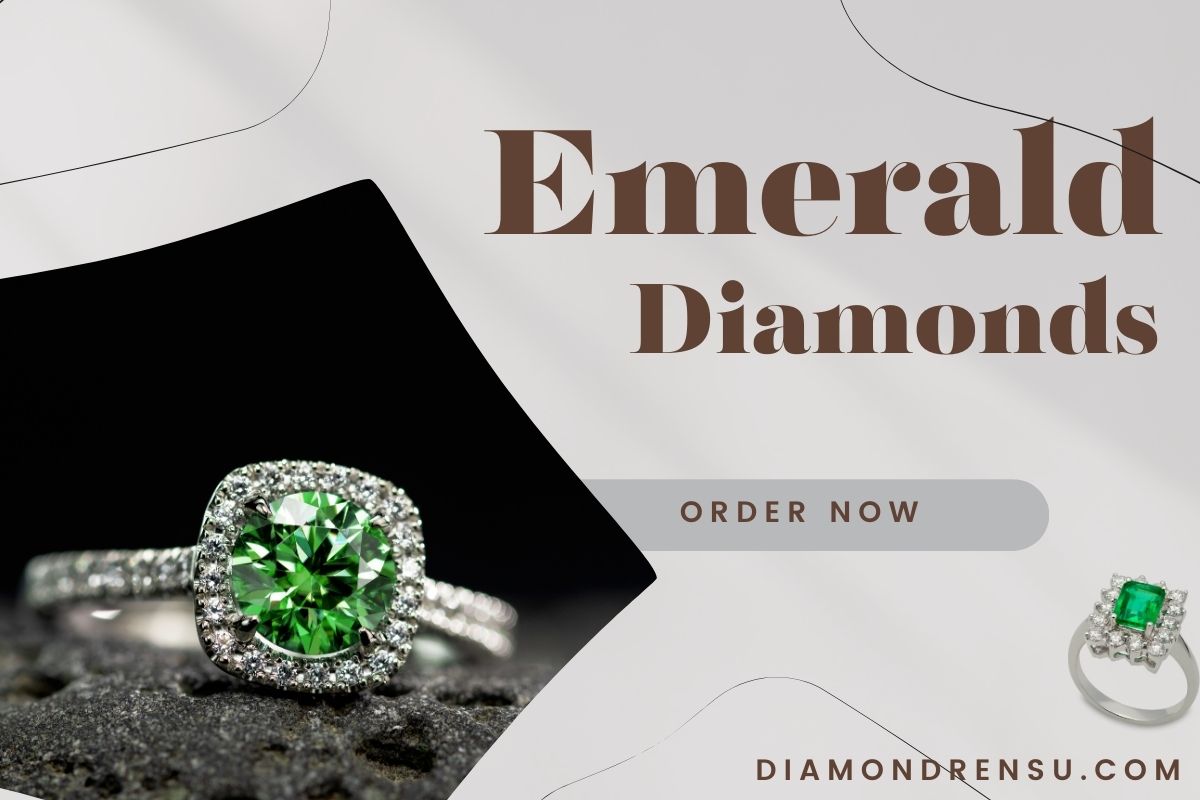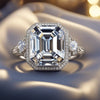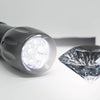
Asscher Cut vs Emerald Cut: A Comparison Guide for Diamond Enthusiasts
When considering a step-cut diamond for an engagement ring or fine jewelry, two popular shapes come to mind: the Asscher cut and the emerald cut. Both cuts share a similar step-like facet structure that produces a hall-of-mirrors effect, which emphasizes the stone's clarity rather than its sparkle. However, their unique characteristics cater to different tastes and aesthetic preferences.
The emerald cut diamond is traditionally rectangular with cut corners, creating a sophisticated, elongated shape that has been treasured for its understated elegance. Its broad and flat plane highlights the pristine clarity of the diamond but can also make inclusions more noticeable. On the other hand, the Asscher cut is similar but typically square, often resembling an octagon due to its deeply trimmed corners, and is celebrated for its vintage appeal.
In terms of brilliance, the Asscher cut tends to have more fire and light performance when compared with the emerald cut, owing to its higher number of facets—58 as standard and 75 if it is a Royal Asscher Cut. The choice between an emerald or Asscher cut diamond ultimately depends on personal preference for shape and the particular reflection patterns one is drawn to in a diamond.
History and Origin
When examining the Emerald Cut Diamond, we trace its roots to the 1400s. Its long, open facets are characteristic, and early versions of this cut were designed to enhance the color and clarity of the stones.
Transitioning into the 20th century, the Asscher Cut Diamond emerged, developed in 1902 by Joseph Asscher of the Royal Asscher Diamond Company. This cut quickly became associated with the Art Deco Period, which favored its geometric lines and symmetry.
| Aspect | Description |
|---|---|
| Origin | Asscher - Developed by Joseph Asscher in 1902 🕰️; Emerald - Originated in the 16th century |
| Design | Asscher - Square shape with cropped corners 💎; Emerald - Rectangular shape with step-cut facets |
| Popularity | Asscher - Popular during the Art Deco era 🌟; Emerald - Regained popularity in the early 20th century |
| Reputation | Asscher - Known for its brilliance and unique optical appearance 👑; Emerald - Prized for its elegant and sophisticated look |
| Revival |
Asscher - Experiencing a resurgence in popularity in recent years 🔄; Emerald - Remains a classic choice for vintage-inspired and modern designs |
- Emerald Cut Diamond
- Origin: 1400s
- Features: Long, open facets
- Asscher Cut Diamond
- Developed: 1902
- Innovator: Joseph Asscher, Royal Asscher Diamond Company
- Popularity: Art Deco Period
Both cuts are step cuts, sharing angular and clean lines yet differ in shape and facet structure. The Asscher Cut's distinctive X in the gemstone's table can be identified, which became emblematic of its design.
During the Art Deco Period, the Asscher cut reinforced its presence, with its 58 large, wide-set facets and nearly octagonal shape, reflecting the era's love for bold and innovative designs. The craftsmanship of the Royal Asscher Company bestowed the cut a royal association, underpinning its prestigious position.
We recognize that our appreciation for these cuts extends beyond aesthetics — they are steeped in rich history, mirroring advancements in diamond cutting techniques and cultural trends of their times.
Understanding Diamond Shapes

When selecting a diamond, the shape is a fundamental aspect that defines its character and brilliance. We'll explore the unique features of Asscher and Emerald cuts to aid in making an informed choice.
Asscher Cut Diamonds
💎 Square shape with cropped corners
✨ Step-cut faceting creates a hall-of-mirrors effect
🌈 Known for its exceptional clarity and brilliance
🕰️ Originated in 1902 by Joseph Asscher
Emerald Cut Diamonds
💎 Rectangular shape with step-cut facets
✨ Large open table showcases clarity and color
🌈 Reflects light elegantly due to its long lines
🕰️ Originated in the 16th century
Asscher Cut
The Asscher cut, a distinctive style often viewed as a square version of the Emerald cut, boasts a deep pavilion and high crown offering a captivating brilliance. With its square shape and unique X-shaped facets, it evokes a vintage aesthetic reminiscent of the Art Deco era. Here are the key attributes:
- Shape: Square with trimmed corners
- Facets: Usually 58, creating a hall-of-mirrors effect
- Appeal: Vintage charm with a bold, geometric look
Popular for its depth and clarity, the Asscher cut requires higher clarity grades due to its open table, which can make inclusions more noticeable.
Emerald Cut
The Emerald cut is revered for its elegance and refined beauty. Characterized by its elongated, rectangular shape with step-cut facets, this shape highlights the clarity of the diamond with its large, open table. Below, we highlight the key features of the Emerald cut:
- Shape: Rectangular with cut corners
- Facets: Broad, flat planes resembling stairs
- Appeal: Sophisticated and classic allure
This cut tends to emit less fire or sparkle compared to other cuts but showcases the diamond's natural clarity and luster. Thus, similar to the Asscher cut, a higher clarity is desirable as inclusions and color are more visible.
Cut Specifications
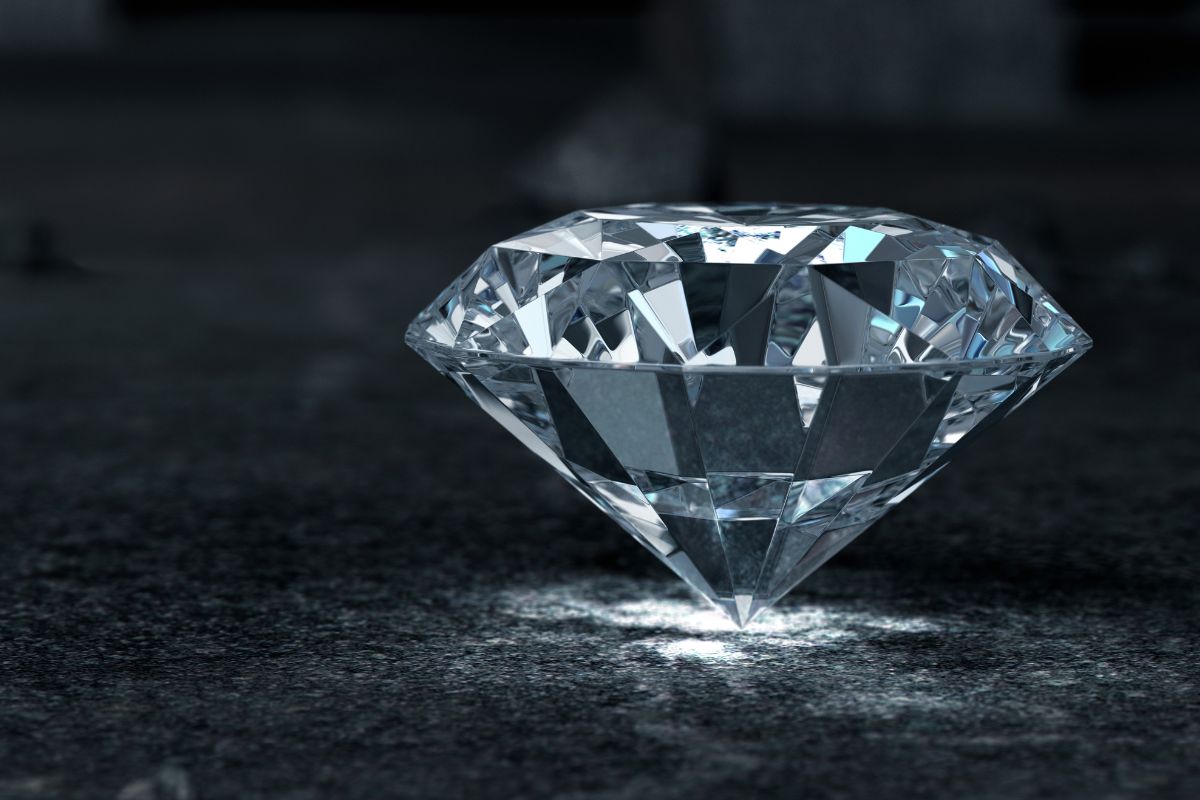
As we explore the key differences between Asscher and emerald cuts, we focus on their individual characteristics, particularly facets, table and depth, and corners -- each aspect contributing to the distinct appearance and light performance of these diamonds.
Facets
- Asscher Cut: Traditionally features 58 facets, which are arranged to enhance brilliance.
- Emerald Cut: Typically also has 58 facets, but the step-cut facets are designed for a more elegant and subtle play of light.
Both cuts have step-cut facets, yet the Asscher cut is occasionally crafted with 57 facets depending on the specific design choices made to optimize the diamond's sparkle.
Table and Depth
- Asscher Cut: Characterized by a smaller table and greater depth, which can accentuate the diamond's clarity and create a more dramatic flash of light.
- Emerald Cut: Noted for a larger table and shallower depth than the Asscher, resulting in a broad, flat plane that engages light in a distinctive, mirrored effect.
We observe that both cuts are appreciated for their unique interactions with light due to their contrasting table sizes and depth proportions.
Corners
- Asscher Cut: Features deeply trimmed corners, enhancing the cut's overall symmetry and contributing to its nearly square appearance.
- Emerald Cut: Consists of subtly trimmed corners, giving it a more elongated look compared to the Asscher cut's squarer silhouette.
In both emerald and Asscher cuts, the corners not only affect the diamond's shape but also play a vital role in how they reflect light, adding to the stone's unique character.
Visual Characteristics
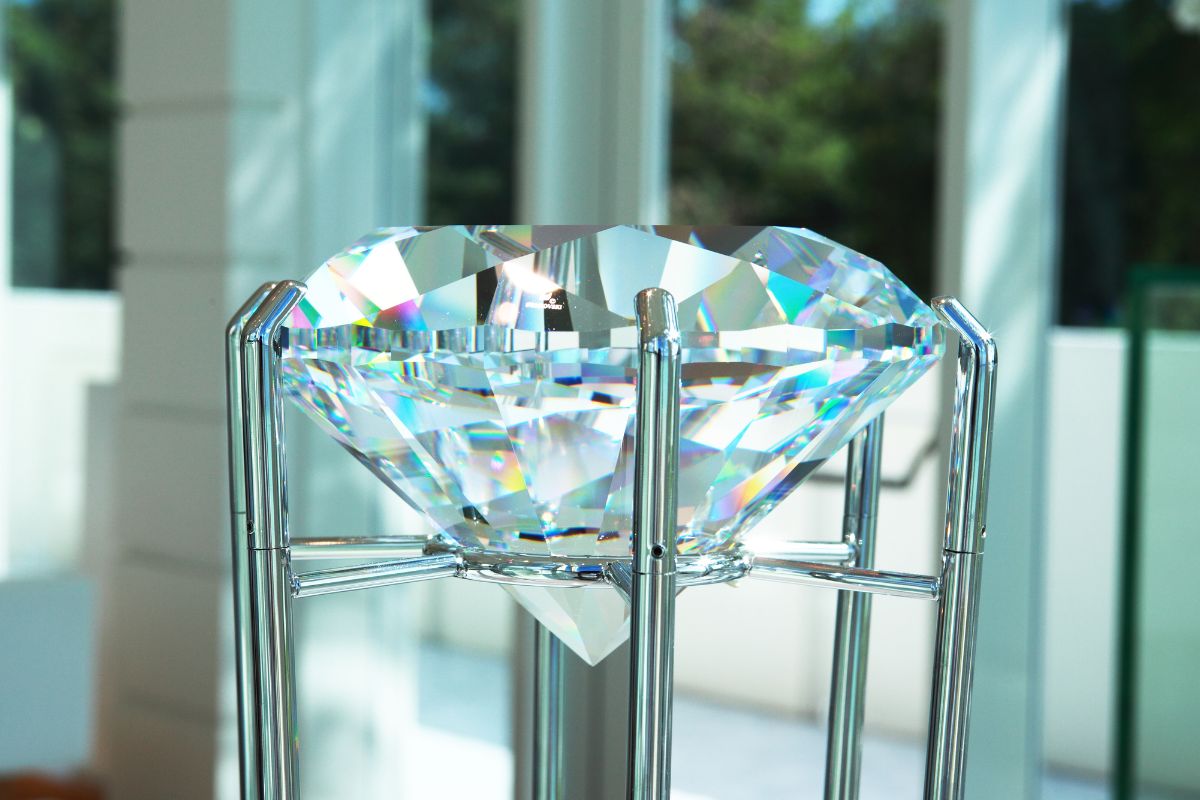
In comparing Asscher cut and Emerald cut diamonds, we observe distinct differences in how they handle light and exhibit their color and clarity.
Brilliance and Sparkle
Asscher cut diamonds are renowned for their brilliance, which is the white light reflected back to the eye, and sparkle, or scintillation, which is the play of light you see with movement. Although both cuts share a similarity in facet pattern, the Asscher cut often enhances light performance due to its square shape and intricately arranged facets.
- Emerald cut diamonds, on the other hand, are known for their unique 'hall of mirrors' effect. This cut typically offers broad flashes of light rather than the fiery scintillation of round brilliants, resulting in a more subdued sparkle that accentuates the stone's clarity and color.
Clarity and Color
When considering clarity and color, Emerald and Asscher cuts both require high clarity grades due to their large open tables which make inclusions more visible. As step-cut diamonds, they can accentuate a diamond's clarity and color:
- Clarity: Ideally, both cuts should possess high clarity grades. Inclusions can be more noticeable, hence why VS2 (Very Slightly Included) or higher grades are often recommended.
- Color: Higher color grades are also preferable since the cuts may highlight any color present in the diamond.
Unique Visual Appeal
The Asscher cut features a concentric square pattern, lending a captivating geometric look. The cut corners of Asscher diamonds contribute to their unique appearance and make them a durable choice for everyday wear.
Regarding Emerald cuts, they are characterized by their elongated rectangular shape which often creates a sleek, elegant visual effect. They may not exude the same level of fiery brilliance as Asscher cuts, but they do offer a sophisticated, mirror-like appearance that showcases the purity of the diamond.
By making informed choices based on these visual characteristics, we can select a diamond cut that resonates with personal style and preferences.
Comparison and Differences

When choosing between Asscher and Emerald cut diamonds, we notice distinct characteristics that cater to different preferences. Both cuts belong to the step-cut family and feature tiers of parallel facets, yet they present unique appearances.
Asscher Cut:
- Shape: Square with cut corners, resembling an octagon.
- Facets: Typically has 58 facets; the Royal Asscher Cut has 75.
- Brilliance: Offers higher brilliance due to its angled cuts.
- Length-to-Width Ratio: Ideally square, around 1.00 to 1.05.
Emerald Cut:
- Shape: Rectangular with cut corners.
- Facets: Standard 58 facets.
- Brilliance: Subdued compared to Asscher cuts; emphasizes clarity.
- Length-to-Width Ratio: Varies, often ranging from 1.30 to 1.60.
Similarities
- Both cuts have the same number of facets (58) in their classic forms.
- They share a step-cut facet arrangement that highlights the clarity of the diamond.
Differences
- Asscher cuts are more akin to a square shape, whereas Emerald cuts are traditionally rectangular.
- Asscher cuts generally provide more sparkle due to their angular cut design.
- Emerald cuts offer the illusion of a larger size for the same carat weight.
We take into account that an Asscher cut tends to mask inclusions better due to its patterned reflections, while the Emerald cut requires a higher clarity grade as inclusions can be more visible.
In summing up the differences, it's important for us to consider the intended ring style and personal aesthetics, as these cuts cater to varied tastes and settings.
Diamond Quality and Grading
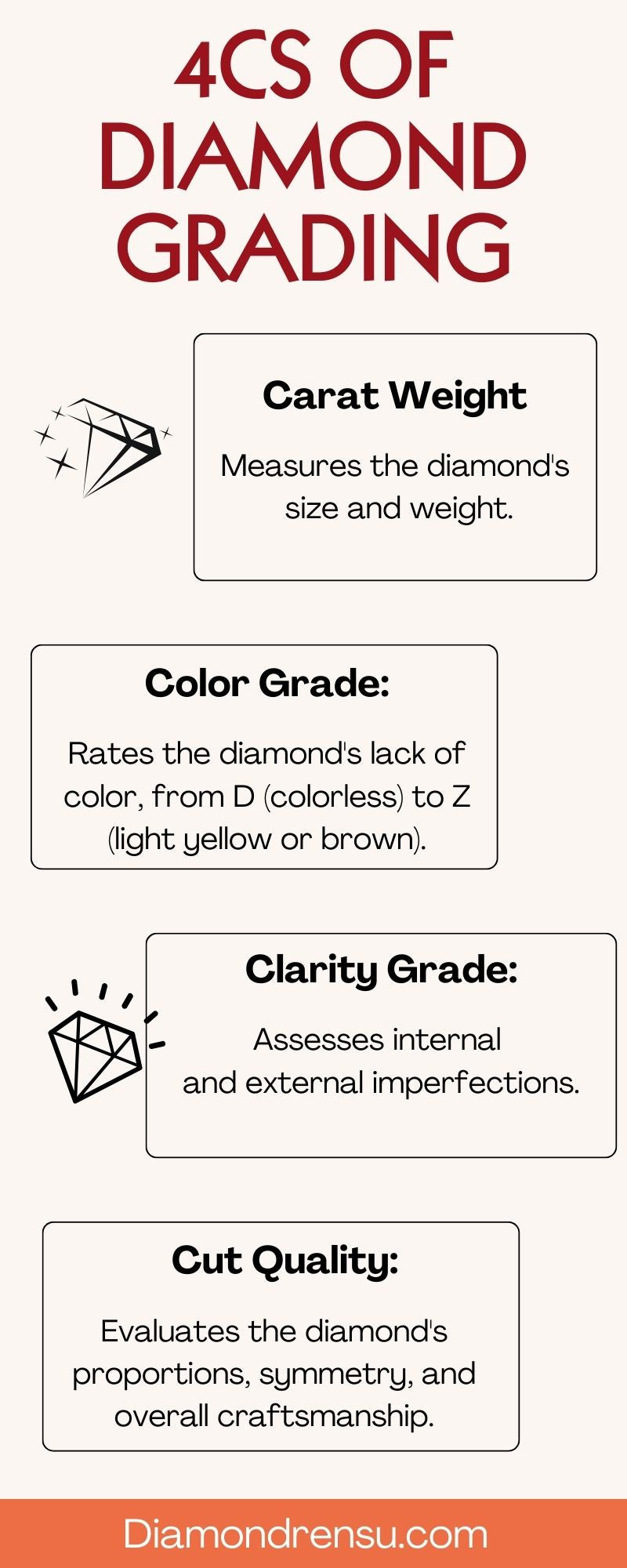
When assessing diamond quality, we focus on individual characteristics such as clarity, color, polish, and symmetry, which are all detailed in a laboratory report. These facets influence not only the beauty but also the value of a diamond.
Clarity and Inclusions
Clarity is a measure of the internal and external imperfections called inclusions. In an Asscher or emerald cut diamond, these inclusions rank from flawless (FL) to included (I1-I3). A popular clarity grade that offers a good balance between quality and value is Very Slightly Included (VS2), where inclusions are not typically visible to the naked eye.
Color and Clarity Grade
The color and clarity grade of a diamond collectively influence its overall appearance. Diamonds are graded on a scale from D (colorless) to Z (light color). For Asscher and emerald cut diamonds, a higher clarity grade compensates for the open table of the cuts, which might make inclusions or coloration more visible.
Polish and Symmetry
These two aspects affect the light performance of the diamond. Polish refers to the smoothness of the diamond's surface. Diamonds with good to excellent polish grades reflect light better than those with lower grades. Symmetry is about the alignment of the diamond's facets. Precise symmetry in Asscher and emerald cuts enhances the beauty and brilliance of the diamond.
Laboratory Report
A laboratory report provided by reputable entities such as the GIA or AGS assesses diamond quality. This report includes detailed assessments of the clarity, color, polish, and symmetry. We encourage customers to consider diamonds that come with a lab report, ensuring an objective evaluation of all factors affecting the diamond's quality.
Setting Styles and Designs
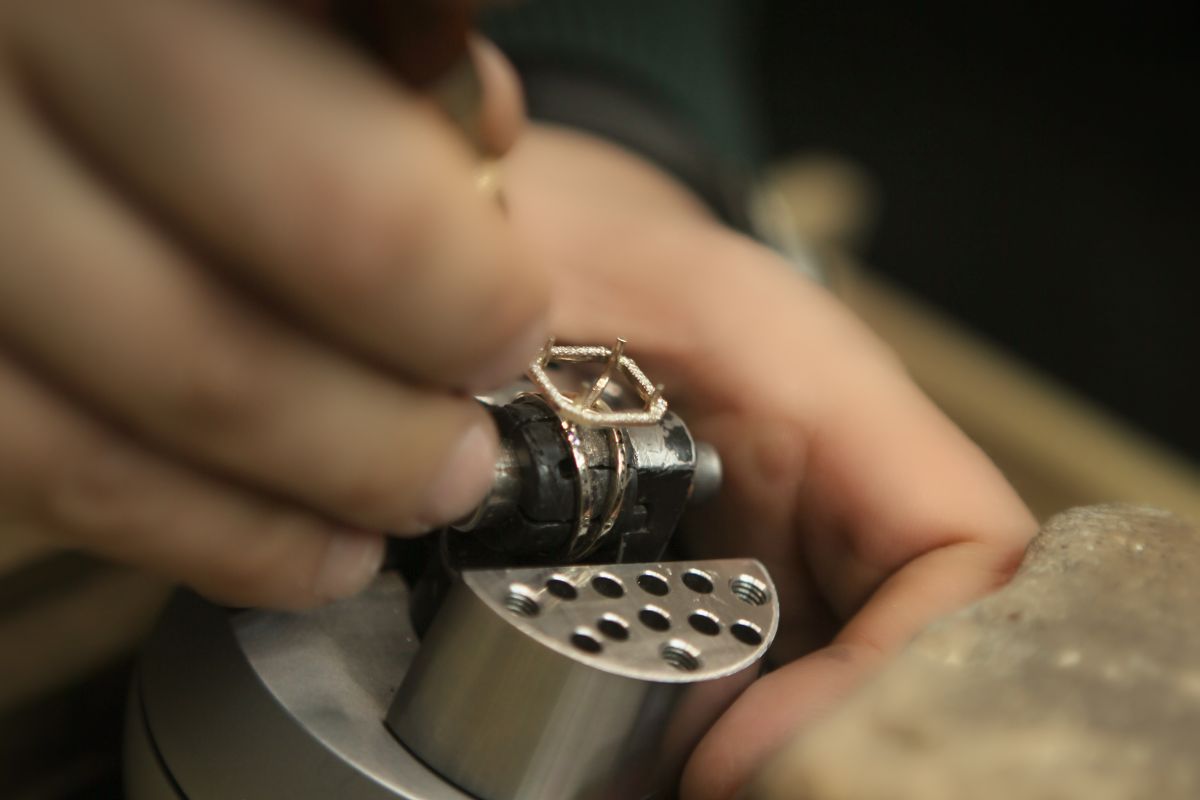
When selecting a setting for Asscher or Emerald cut diamonds, we consider the visual balance and the enhancement of the stone's unique features. Each setting style has its bespoke appeal, perfectly complementing the diamond cut's character.
Solitaire Setting
In a Solitaire Setting, the diamond is the central star of the show. This minimalist setting features a single diamond mounted on a band, which draws all eyes to the stone's shape and step-cut facets. For an Asscher or Emerald cut diamond, a solitaire setting often has a four or six-prong arrangement to secure the gemstone. This showcases the cut's clarity and allows maximum light to enter the diamond.
- Ideal for: Emphasizing the diamond's geometry
- Metals: Often in platinum or gold
- Bands: Can be plain, or with subtle engravings
Halo Setting
The Halo Setting, where the central stone is encircled by a collection of smaller diamonds, accentuates the size and sparkle of the main diamond. We see that the geometric harmony of Emerald and Asscher cuts make them particularly suited to a halo. It adds an overall brilliance and creates a vintage-inspired glamour.
- Enhancement: Makes main diamond appear larger
- Popularity: Favored in engagement rings for its elegance
- Variations: Single or double halo designs
Three-Stone Setting
For our Three-Stone Setting, the central Asscher or Emerald cut diamond is flanked by two side stones. Typically, these side stones are smaller and can be the same cut or a complementary shape like baguettes or trilliants. This setting signifies the past, present, and future and is a popular choice for engagement rings.
- Symbolism: Represents a couple's journey
- Side Stones: Can contrast or match the main diamond
- Versatility: Suitable for various metal types and band styles
By choosing the right setting, we enhance the intrinsic beauty of Asscher and Emerald cut diamonds, creating a ring that's both timeless and expressive of individual style.
Purchasing Considerations
When selecting between Asscher and emerald cut diamonds, we need to consider various factors that will influence our choice. Let's explore how price, carat weight, and the diamond buying process will impact our decision.
Price and Budget
Price plays a critical role in our purchasing decisions. On average, Asscher cut diamonds tend to be slightly more expensive than emerald cut diamonds due to their complexity and brilliance. For an Asscher cut diamond of G-H color and VS2 clarity, prices can be as follows:
These are average figures, and the actual price may vary based on specific characteristics and the retailer. We must align our budget with the desired cut and carat weight to ensure we're making a smart investment.
Carat Weight
Carat weight affects both the appearance and value of the diamond. As carat weight increases, so does the price, often exponentially rather than linearly. We need to balance our desire for a larger stone with the reality of its price. For example, doubling the carat weight from 1 to 2 carats doesn't double the cost; it typically increases it by more than four times. We'll want to carefully consider how much carat weight our budget allows for.
Diamond Buying Process
Navigating the diamond buying process requires a clear understanding of our preferences and a thorough vetting of potential vendors. It is essential to:
- Determine our cut preference
- Set a realistic budget
- Research vendors for quality and service
- Inspect the diamond (preferably in person or via high-quality imagery)
- Verify certification and return policies
Throughout this process, we must remain aware that while the Asscher cut may offer more brilliance, the emerald cut provides a classic elegance. Both are excellent choices, but our final decision will hinge on which attributes align with our personal taste and budgetary constraints.
Modern Choices and Trends
As we examine the current landscape, it's essential to realize that both Asscher and emerald cut diamonds are influenced by the surge in lab grown diamonds and recent diamond industry advancements. These factors contribute to the diversity and availability of these elegant, step-cut stones.
Lab Grown Diamonds
Lab grown diamonds have made their mark as a modern choice for consumers who prioritize both ethical and economic considerations. These diamonds are identical to their mined counterparts in terms of their physical, chemical, and optical properties. Notable companies like James Allen offer an extensive selection of lab grown Asscher and emerald cuts, providing us with options that are both eco-conscious and cost-effective.
- Lab Grown Popularity: Growing rapidly in acceptance.
- Economic Advantage: Often priced lower than mined diamonds.
- Eco-Friendly Aspect: Reduced environmental impact.
Diamond Industry Innovations
Innovation within the diamond industry has refined the precision and cut quality of both Asscher and emerald diamonds. With the advent of new cutting technology, gemologists can now craft stones with symmetry and proportions that maximize their unique characteristics.
- Cutting Enhancements: Improved the brilliance and light performance.
- Vintage-Style Resurgence: Asscher cuts have gained popularity for their traditional, yet bold appearance.
- Variety Expansion: In addition to Asscher and emerald cuts, consumers can also explore cushion cut diamond, princess cut diamond, radiant cut, and round cut options, all benefiting from cutting-edge technology.
James Allen and other leading retailers have embraced these innovations to offer an array of high-quality diamonds that appeal to various tastes and preferences. Through a combination of precision cutting processes and the timeless allure of vintage-style cuts, our options today are more diverse and appealing than ever.
Also Read
Frequently Asked Questions
In this section, we'll answer some of the most common queries regarding the differences and specific qualities of Asscher and emerald cut diamonds.
What distinguishes the Asscher cut from the emerald cut in terms of appearance?
The Asscher cut is essentially a square version of the emerald cut, displaying a pavilion that is cut with rectangular facets in the same style as the emerald cut. Visually, Asscher cuts usually feature a nearly 1:1 length-to-width ratio, giving it a more squared appearance, whereas emerald cuts have a more elongated shape with a typical ratio of about 1.45:1.
How does the price comparison between Asscher and emerald cuts typically play out?
We generally observe that pricing for Asscher and emerald cut diamonds is influenced by factors such as carat, color, and clarity. The price can vary significantly based on these qualities, and one cut may not consistently be more expensive than the other. Market demand and the specific characteristics of the individual diamond also impact the price.
What makes the Asscher cut unique compared to other diamond shapes?
The unique feature of an Asscher cut lies in its deep pavilion, high crown, and small table. This combination creates a distinct, "hall of mirrors" effect that is different from the sparkle of other shapes. Additionally, its squared lines and stepped facets contribute to a vintage appeal that distinguishes it from round and princess cuts.
In what ways do the facets of an Asscher cut differ from those of an emerald cut?
While both the Asscher and emerald cuts are step cuts and share a similar facet style, the Asscher cut typically has larger step facets, a higher crown, and a smaller table. This can lead to a more dramatic play of light within the diamond compared to the subtler light performance of an emerald cut.
Which factors contribute to the overall brilliance and clarity of Asscher and emerald cuts?
Asscher and emerald cuts are less about brilliance and more about clarity and elegance. Their wide, open facets make them less fiery than round brilliants but require higher clarity grades as inclusions and color tints are more visible. Their cut quality, including the symmetry and precision of their facets, greatly affects their overall appearance.
What should be considered when choosing between an Asscher and an emerald cut for an engagement ring?
When choosing between these cuts for an engagement ring, consider the desired visual effect: the Asscher cut's squared shape and distinctive vintage character, or the emerald cut's clean lines and elongated form. Both cuts exhibit a sophisticated step design and require high clarity, so one must prioritize either shape preference or diamond quality to make the best choice for the intended style and budget.
Checkout some of our top collections:
Leave a comment
Please note, comments must be approved before they are published.
